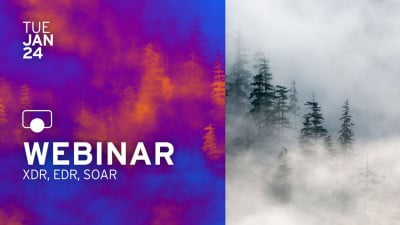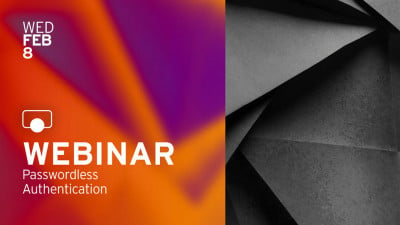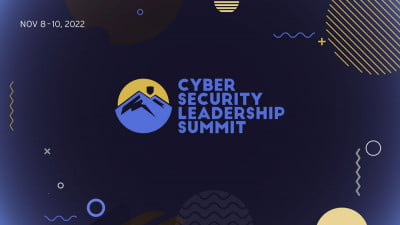1 Introduction / Executive Summary
Cyberattacks have been intensifying over the past few years as cybercriminals continue to devise new strategies to launch sophisticated attacks and gain unauthorized access. The tactics, techniques, and procedures (TTPs) that were once only used by well-funded state actors are being commoditized by cybercriminals. As a result, some vendors realized that the traditional approaches and tools of cybersecurity have failed to keep up.
Global supply chains and private organizations, which are already in a precarious state due to the Covid-19 pandemic, are facing an increased risk of cyber-attacks as a result of geopolitical instability. To stay secure and compliant, organizations need to actively seek out new ways to assess and respond to cyber threats while providing Security Operations Centers (SOC) analysts with the right tools.
Large organizations, whether they are part of critical infrastructure or not, need to be able to detect and respond to incidents by monitoring security and analyzing real-time events. Security Information and Event Management (SIEM) products were once hailed as the ultimate solution for managing security operations. In many organizations, they still form the foundation of modern SOCs. However, visibility of potential security events alone does not help analysts to assess each discovered threat, nor does it reduce the amount of time spent on repetitive manual tasks in incident response processes.
High deployment and operational costs, lack of intelligence to react to modern cyberthreats, and the growing skills gap to staff the security teams needed for efficient security operations were the most common problems of legacy SIEM tools. SIEMs did and still do provide value, but some SIEM users report that the volume of false positives causes problems in trying to sift out what is worthy of attention and follow-up and what is not.
Parallel to SIEM solutions, a class of incident investigation and response platforms has emerged focusing on creating more streamlined and automated workflows for dealing with security incidents. Security Orchestration, Automation, and Response (SOAR) products are the latest iteration of this evolution. SOAR vendors provide solutions that offer centralized coordination, collaboration, and management for forensic analysis and incident response.
Driven by the growing demand to implement centralized, automated control over incident analysis and response workflows across disparate security solutions, vendors are expanding their existing security intelligence, security orchestration, or incident response platforms to combine the key capabilities across all three of these market segments.
Complementing or directly integrating with SIEMs, SOAR platforms aim to become the foundation of contemporary SOCs. Large organizations were the early adopters of SOAR solutions as they were more susceptible to cyberattacks. Whether or not your organization has a mature and established SOC, SOAR capabilities have the potential to augment SIEM/SOC deployments beyond the detection stage.
Modern cybersecurity architectures must include tools and services that cover everything from the network layer to the application layer and all the devices in between. Network layer security tools include firewalls, VPNs, routers/switches, Software Defined Networking (SDN) control planes, Intrusion Detection and Prevention Systems (IDS/IPS), email gateways, web gateways, Network Detection & Response (NDR) solutions, and Distributed Deception Platforms (DDPs). Associated cloud resources should have Cloud Access Security Brokers (CASBs) for both network and application layer controls, and Cloud Workload Protection Platforms (CWPPs) to secure workloads in IaaS and PaaS.
Endpoints need Endpoint Protection (EPP) suites and Endpoint Detection & Response (EDR) capabilities. EPP should contain a multiplicity of security functions: advanced anti-malware agents that can proactively discover and prevent malware from executing, utilizing ML-enhanced behavioral and memory analysis, exploit prevention, and other measures. EPP should also perform application control, integrate with or provide endpoint firewall protection, URL filtering, critical system file monitoring, asset inventory and patch management, and vulnerability management. EDR solutions have deeper monitoring and analysis functions that look for signs of attacks on endpoints that may have gone unnoticed by EPP. EDR should have automatic analysis and remediation capabilities. All kinds of endpoints should be considered, not just desktops and laptops, but also servers, virtual servers, containers, mobile phones, and IoT devices. Most vendors now offer Endpoint Protection Detection & Response (EPDR) tools that combine EPP and EDR.
Application security starts with secure coding practices. Nevertheless, additional security mechanisms are needed and when deployed can help protect apps from attacks. Defenses at the application layer may include protocol gateways, reverse proxies, API gateways, and Web Application Firewalls (WAFs). CASB and CWPP solutions are useful for cloud hosted applications.
Databases, Big Data systems, data lakes, and data analytics tools must be considered. Databases have built-in security constructs that must be employed to control access and protect against sabotage. SQL database security is well established but can be harmonized with enterprise security policies using SQL proxies and API security gateways. Big Data tools and related storage units require a mix of application, network, and cloud security tools for proper coverage.
Last but certainly not least is identity. We have heard for years that “Identity is the new perimeter”. This means that Identity and Access Management (IAM) systems play a critical role in the overall security architecture. Traditional security perimeters have become more porous over the years to allow higher level traffic to communicate directly with business or mission-critical applications. Digital identity is what allows for better protection of all resources along the path from “outside” to “inside”, by enforcing strong authentication and granular authorization. Thus, IAM concepts, systems, and controls must pervade all digital environments.
SOAR systems can be fed by all these kinds of security solutions, albeit indirectly through the aforementioned SIEMs. SOARs that are tightly integrated with SIEMs can take in telemetry via APIs or in CEF and syslog format. SOAR systems generally have OOTB connectors (software configurations and code in the form of packaged API calls) to facilitate data collection from upstream sources. In some cases, analysts need access to full packet captures, so NetFlow and PCAP are supported by some vendors. In those cases, vendors have appliances that can connect on SPAN/TAP ports on network devices to achieve full packet capture.
The orchestration aspect of SOAR involves not only the collection of telemetry from these different sources, but also initiating a workflow, opening cases and tickets where appropriate, and correlation and enrichment of event information. Many large organizations, especially the type looking for SOAR systems, have IT Service Management (ITSM) Suites that dispatch and track activities in the form of tickets. SOAR solutions have case management capabilities by design, but they must also interoperate with existing ITSM solutions.
For example, a ransomware attack will generate alerts from one or more endpoints and possibly network monitoring and data storage monitoring systems. SOAR’s job is to distinguish between related and unrelated events across all connected systems, assemble it coherently, enrich the event information by acquiring additional intelligence about observed entities (files, URLs, IP addresses, user accounts, etc.), create and/or coordinate tickets with ITSMs, with the goal of assisting human analysts and/or taking pre-programmed responses in playbooks.
Enrichment of event data can be facilitated by SOAR systems by the automatic collection of additional forensic evidence on-site, such as outputs of EPP scans, obtaining non-standard log files, memory dumps, etc. Some vendor solutions can kick off somewhat automated threat hunts (looking for IOCs across multiple nodes in an environment) and add the results to preliminary investigation. SOAR solutions should also be able to generate queries to threat intelligence sources based on suspicious items and patterns observed from upstream telemetry.
Some vendors have extensive threat intelligence capabilities which are utilized by their SOAR solutions. External threat intelligence sources may and ideally should be used to supplement internal threat intel sources. Examples of threat intelligence content include IOCs (files, hashes, IPs, URLs, and so forth), compromised credential intelligence, device intelligence (often from Mobile Network Operators [MNOs]), and domain/file/IP/URL reputation information. Ideally SOAR solutions will accomplish all the foregoing actions automatically prior to or while alerting a human analyst.
When an analyst is alerted and assigned a case, all pertinent information related to the event should be constructed and presented by the SOAR platform to the analysts for their investigation. The SOAR platform should package information coherently, with descriptions and recommendations for actions.
Most SOAR vendors adhere to the paradigm of a playbook, sometimes called a runbook. Playbooks typically address common security scenarios and can be triggered either by manual analyst action or automatically if allowed by policy and supported by the vendor. Examples of security events that may trigger playbooks are phishing, malware, ransomware, failed login attempts, excessive or abnormal use of privileged credentials, prohibited communication attempts, attempts to access unauthorized resources, file copying or moving, attempts to transfer data using unauthorized webmail providers, attempts to transfer data to blocked IPs or URLs, unusual process launches, unusual application to network port activities, unusual network communication patterns, and so on. The end goal of SOAR is to be able to automate incident responses among the various security systems. To this end, SOAR platforms often support dozens to hundreds of playbook scenarios and offer hundreds to thousands of possible incident response actions.
Given the current geopolitical climate, every organization must act with extreme urgency to secure its information technology infrastructure. As rogue nations continue to foster an environment for cybercriminals and ransomware attackers to thrive, organizations need to be prepared and build a strong security foundation while providing SOC analysts with the right tools.
As a result, some vendors have recently started to adopt Extended Detection and Response (XDR) solutions. XDR has been considered as the next evolution of EDR because it takes a holistic approach to threat detection and response that facilitates data ingestion, analysis, and prevention workflows across an organization’s IT infrastructure. Although XDR is intended to be “SOAR-like”, SOAR is still relevant and appropriate for large organizations that have SOCs and those that have taken a best of breed security architecture approach. SOAR can be beneficial and help bring those best of breed products together in a unified way.
Ultimately, the selection of any SOAR solution will depend on the organization’s particular requirements, which depend strongly on the currently deployed and planned IT security and IAM infrastructure. Careful consideration must be given to evaluating which SOAR solutions have integrations for the tools in use and on the roadmap. The maximum utility is achieved by selecting a SOAR that has pre-packaged connectors for all the security and identity elements in your portfolio.
1.1 Highlights
As the number and sophistication of cyberattacks have continued to increase over the years, organizations need to be prepared and build a strong security foundation while providing SOC analysts with the right tools.
SOAR products have been driven by the growing demand to distinguish between related and unrelated events across all connected systems, enrich the event information by acquiring additional intelligence, create and/or coordinate tickets with ITSMs, and assist human analysts with pre-programmed responses in playbooks.
The SOAR market is mature and as such has a reasonably well-defined terminology and includes capabilities such as data collection, correlation, enrichment, orchestration, automation, and incident response and mitigation.
Some vendors provide SOAR as a service for their customers, and most license their products to Managed Security Service Providers (MSSPs) who run it on behalf of their customers.
SOAR vendors deliver solutions that often require complex on-premises deployments. However, SOAR systems also offer support for various cloud hosted environments such as IaaS, PaaS, and SaaS applications as well.
The selection of any SOAR solution will depend on the organization’s particular requirements, which depend strongly on the currently deployed and planned IT security and IAM infrastructure.
The Overall Leaders (in alphabetical order) are D3 Security, Fortinet, IBM Security, Logpoint, Microsoft, Palo Alto Networks, Splunk, and ServiceNow.
The Product Leaders (in alphabetical order) are D3 Security, Fortinet, IBM Security, Logpoint, Microsoft, Palo Alto Networks, ServiceNow, Splunk, Swimlane, and ThreatQuotient.
The Innovation Leaders (in alphabetical order) are Fortinet, IBM Security, Logpoint, Palo Alto Networks, and ServiceNow.
The Market Leaders (in alphabetical order) are Fortinet, IBM Security, Microsoft, Palo Alto Networks, ServiceNow, and Splunk.






































